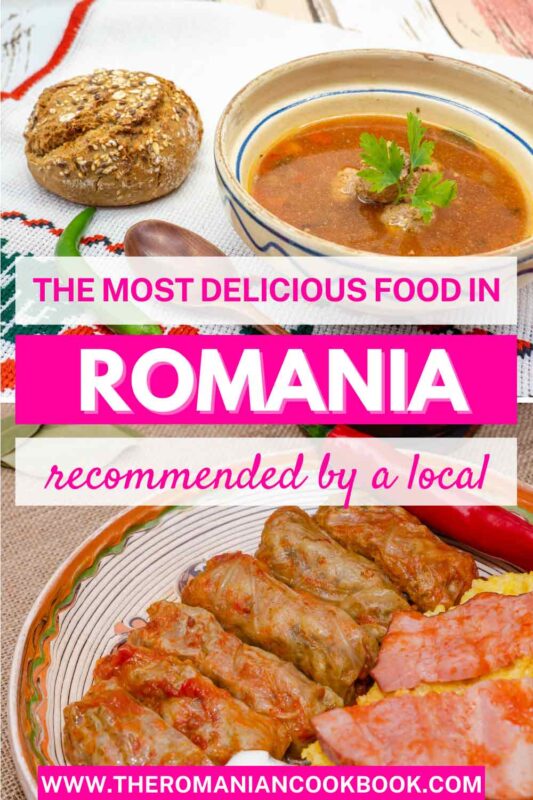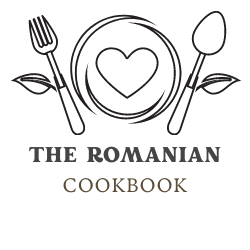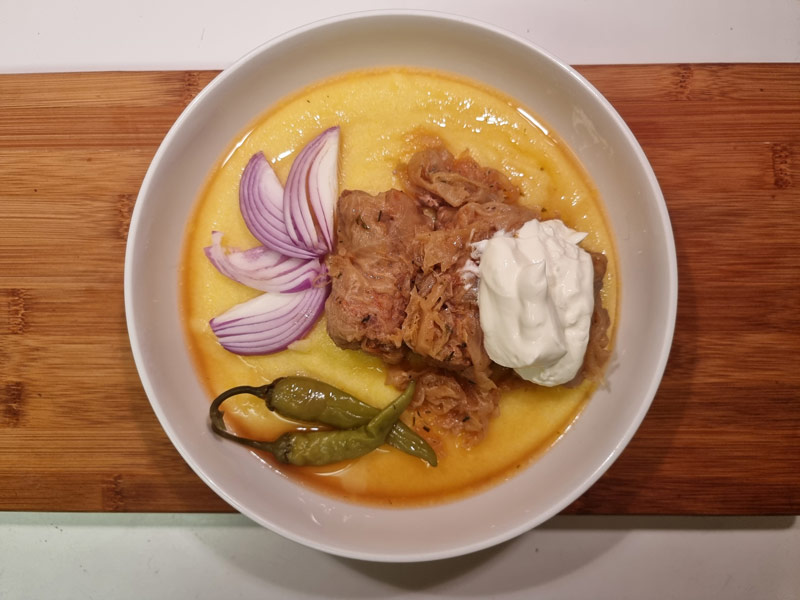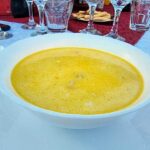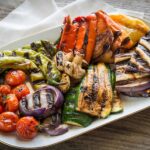Traditional Romanian food is hearty and full of flavour. The most common protein used in Romanian cuisine is pork, which is present in a lot of traditional dishes. Whilst Romanian food might not be in any of the top cuisines of the world, I can assure you that once you try it, you will want to eat it again and again. The food in Romania has been influenced over centuries and by the previous occupiers (invaders) of the land, so we share a few of the traditional dishes with our neighbouring countries. You can find variations of “sarmale”, the national dish of Romania, all over Eastern Europe, all the way to the Balkans. Each country has its own recipe, but at the core, we share the same cooking method.
It was actually hard to pick only a few of the traditional Romanian dishes to include in this guide. As a Romanian who grew up eating mostly traditional food, I can recall hundreds of different delicious dishes that warmed me up in winter, or cooled me down in summer. There is nothing better than a hearty pork stew on a very cold winter afternoon. Similarly there is nothing better than a platter of fresh telemea cheese, with red onions and smoked lardons, on a hot summer evening, followed by a cold slice of watermelon.
The Most Delicious Traditional Romanian Dishes:
Sarmale

Sarmale is the national dish of Romania. We eat sarmale at every big celebration, from Christmas to Easter, from christenings to Weddings, funerals and remembrances. No matter how modern your family is in Romania, you will never skip sarmale when you are preparing an event.
Sarmale consists of pickled cabbage rolls filled with a mixture of minced meat and herbs. It takes a time to make sarmale, mostly because of the rolling process. The smaller the sarmale, the more appreciated your skill in making them is. Each family has their own traditional recipe of sarmale, which varies from the south to the north of the country. In some parts of the country it is acceptable to put tomato sauce inside the pot, when boiling the sarmale. In others, this is a non-acceptable practice. In my family, smoked meat is always added to the pot, between the sarmale. Other families add unsmoked meat, or even pork ribs. No matter how they are made though, sarmale are delicious and a must try when you visit Romania!
We serve sarmale with polenta, sour cream, and pickled green chili pepper.
Click here to see my sarmale recipe.
Ciorbă de Perișoare – Sour Meatballs Soup
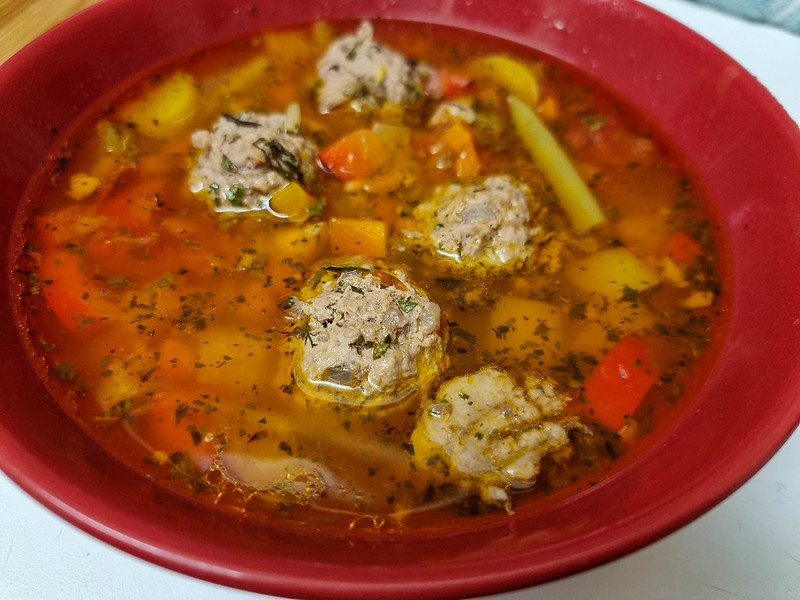
In România we eat a lot of Ciorba. This is a sour soup with a vegetables base and usually made with plenty of meat. Many ciorbas are dressed with egg yolks and sour cream. The traditional meal in Romania consists of a bowl of Ciorba to start with, which is followed by the main meal. When I speak about sour soups I refer to the traditional Romanian ciorba, which is a soup that is dressed with a liquid such as bors, lemon juice, vinegar or pickled cabbage juice. This process is what gives these soups their particular taste to which we refer as sour. But don’t imagine they are like lemons, or those impossible to eat candies, on the contrary, they are delicious and a unique part of the Romanian cuisine.
Ciorba de Perisoare is one of the most popular sour soups in Romania. It translates as Romanian Meatballs Soup and it is one of my favourites as well. I just love the combination of its sour taste and the juicy meatballs.
Meatball soup is a winter comfort food, warming you up when outside there are -10 degrees. It is a very common soup in the Romanian kitchens, and you can find it in most traditional restaurants around the country. I love to dress my soup with sour cream and eat it with crusty bread. This soup is a meal in itself because of the meatballs.
Click here to see my recipe for ciorba de perisoare.
Ciorbă de Burtă – Tripe Soup
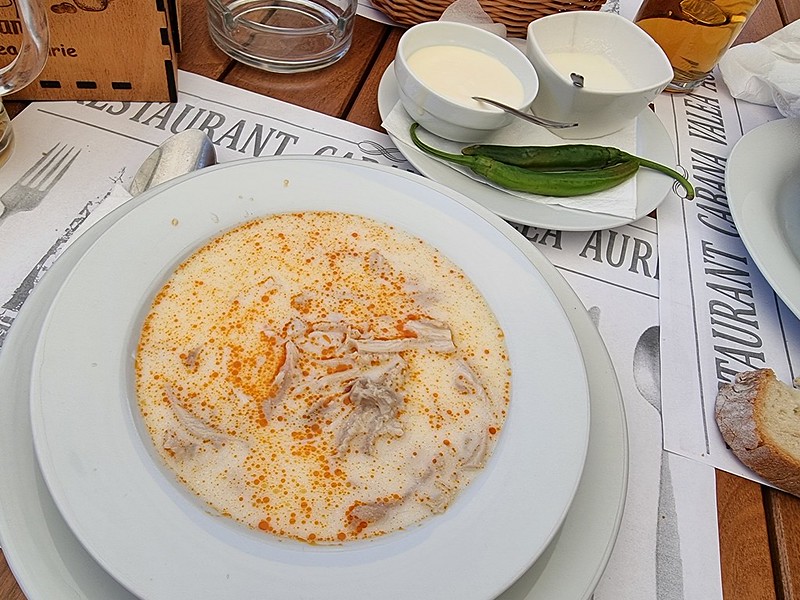
Another favourite of mine is the tripe soup. This is quite controversial, as you either love it or hate it – and it all depends on your first ever serving of it. If it’s a good one, you will always like it. I remember my first bowl of tripe soup, at the canteen of my parent’s work. I loved the flavour so much that I had three bowls on that day, not eating anything else for the rest of the day.
Tripe soup is sour, dressed with sour cream and egg yolks. The protein in the soup is tripe, which has been very well washed, boiled until soft, and then cut into small stripes. It has a particular chewy-like texture, and I guess this is what puts some people off from having it. But trust me, it’s a proper delicacy!
I like to eat this soup with garlic sauce, pickled green chili and extra sour cream.
See my Romanian tripe soup recipe here.
Ardei Umpluți – Stuffed Peppers

I have always had a love and hate relationship with the stuffed peppers. Now that I’ve grown up, I learned that balance is the key to liking them. This hearty dish is quite heavy on the stomach, but it tastes so good.
Bell peppers are stuffed with a mixture of minced meat, paprika, herbs and an egg to bind everything together. Then they are covered with tomato slices and boiled until cooked, for at least one hour. The end result is soft pepper skin and packed full of flavours inside.
We serve the stuffed peppers with sour cream, for a balance of flavours.
You can see my recipe for stuffed peppers by clicking here.
Ficăței la Tigaie – Fried Liver

Fried liver is another delicious Romanian traditional food. In Romania we eat offal – we don’t waste any part of the animal. In December, many families in the countryside still participate in the tradition of slaughtering a pig, preparing it, and freezing the meat to last for the entire year.
For this recipe we use either pork or chicken liver. We fry it with onions and garlic, and serve it alongside mashed potatoes, sometimes sprinkled with chopped parsley. When cooked right, the liver has a creamy texture and a distinctive taste. Sometimes, in restaurants, the cooks will use white wine to give the dish some more flavour. When I cook this recipe at home I like to use a little bit of sherry, to sweeten up the dish.
You can see my fried liver with onions recipe here.
Mici
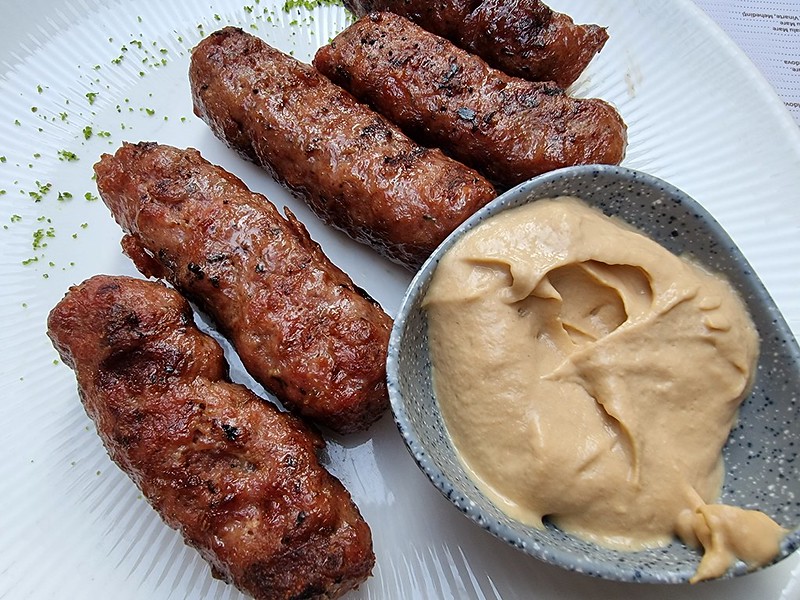
Mici are another traditional Romanian food that I crave quite often. They are a regular at the Romanian barbecue, and are not really the same when you cook them in the pan. It is tradition to start a barbecue on the 1st of May bank holiday, and cook mici on it. It symbolises the arrival of summer and the start of the barbecue season.
Mici, or mititei, are skinless sausages made from minced meat and spices. They are eaten with mustard and bread.
You will find the best mici in Romania at roadside grill restaurants on Dealu Negru, a popular stop for truckers who drive between Pitesti and Ramnicu Valcea.
See my traditional mici recipe here.
Mămăliguță cu Brânză si Smântână – Polenta with Cheese and Sour Cream
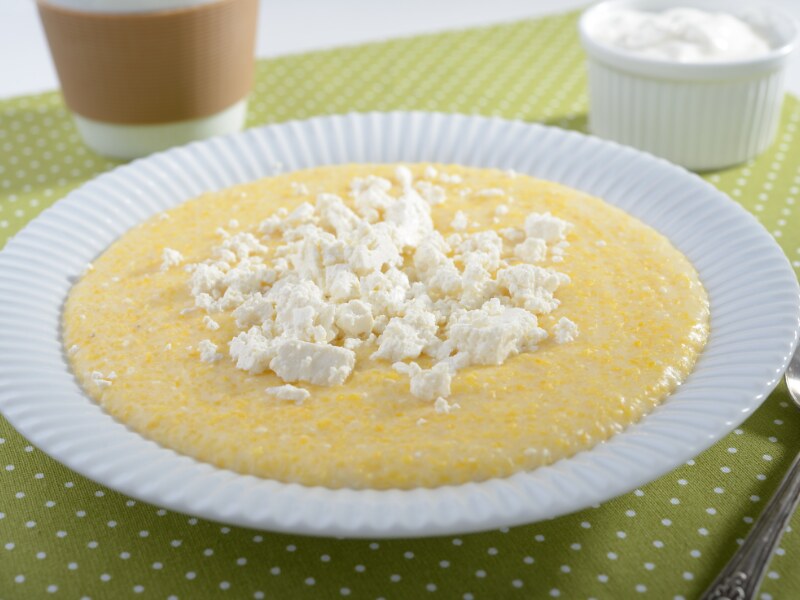
Polenta with cheese and sour cream is proper Romanian comfort food. It is creamy, indulgent and has plenty of calories – but who’s counting when it tastes so good?
In this recipe, the polenta is cooked to be soft, which means that less cornmeal is used and more water. When the polenta is ready, it is mixed with a generous amount of butter, then topped with salty cheese and dollops of sour cream. If you want, you can also add a fried egg on top.
Pomana Porcului – The Pig’s Alms
The Pig’s Alms is a traditional Romanian recipe that is usually cooked by the women, whilst their husbands are portioning the pig, in the backyard. It is a mixture of different parts of the pork meant to reward the hard work of the men, served alongside the traditional Romanian drink, palinca.
The Pig’s Alms usually consists of different parts of the fresh pork meat, freshly made sausages, liver, all fried together in lard, with herbs, garlic and paprika. It is served with pickles, raw onions, fresh bread and homemade garlic sauce.
Chiftele – Meatballs

Chiftele are another tasty Romanian traditional dish. They can be on their own, or served inside a tomato sauce – in this case we call them marinated.
The classic meatball can be either fried or baked in the oven. The recipe is pretty much the same: minced meat mixed with herbs, paprika, and an egg to bind everything together.
The marinated meatballs are cooked the same way, and then dunked inside a slightly sour tomato sauce. Inside the sauce I like to add quite a bit of parsley, basil and dill. The meatballs are cooked until they absorb the sauce, and then they are served alongside mashed potato.
I like to eat the simple meatballs as a snack, or as an appetizer, without any other accompaniments.
You can see my meatballs with sauce recipe here.
Tochitură – Meat Stew
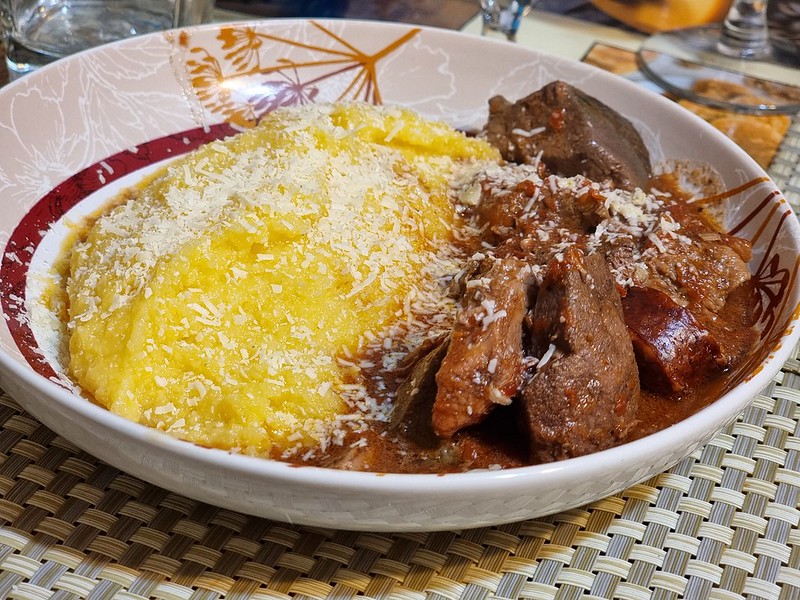
This traditional Romanian stew is mouthwatering and full of flavour. The last time I visited my family I asked my mom to make it for me, which she did. This is a stew that originates in the Moldova region of Romania and consists of a mixture of meats, sausages and offal, slow cooked together so that the flavours combine.
The meat cooks in its own juices and only at the end, a little bit of tomato paste is added. The tochitura is served alongside polenta, with grated salty cheese on top, and a fried egg over it. I highly recommend you order tochitura if you see it on the menu of a traditional Romanian restaurant.
You can see my tochitura recipe here.
Friptură de Porc – Pork Steak Stew

Did I mention that traditional Romanian cuisine uses a lot of pork? Whilst in my family we would usually cook pork steak on the barbecue, when spending the day in nature, the most common way of having this type of meat whilst at home was in the oven, with a sauce.
The pork steak stew uses neck chops which have been seared in the pan. The meat is then transferred to a roasting tin, covered with chopped onions, peppers and smoked lardons, and slow cooked for a few hours, until tender.
It is served alongside either mash potatoes or fries, with pickles.
Click here to see my mom’s pork steak stew recipe.
Ciolan cu Varză – Pork Knuckle on Cabbage
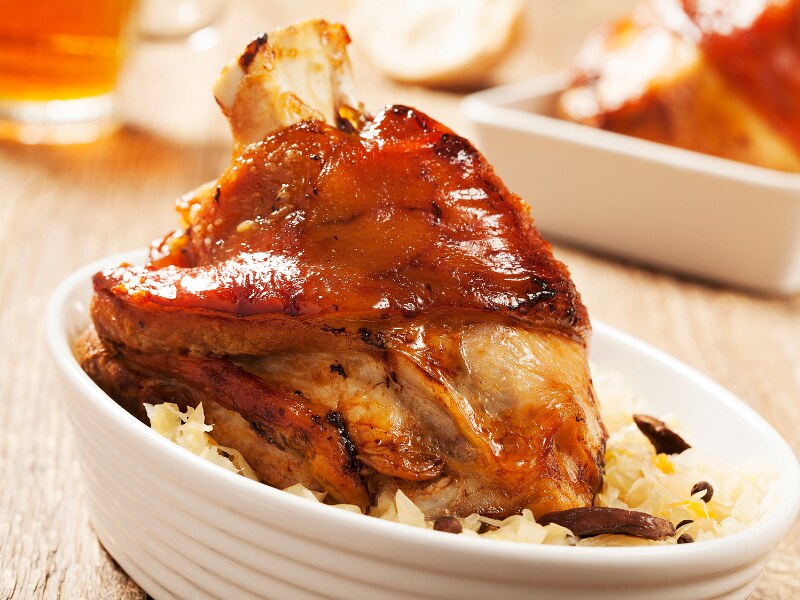
Cabbage is an ingredient used in a lot of Romanian traditional dishes. We cook it on its own, in recipes such as stews with meat, or we pickle it and enjoy it as a side salad for hearty dishes.
In this traditional recipe, pickled cabbage is mixed with paprika, thyme and caraway, and put inside a tray to be cooked in the oven. The pork knuckle is cooked in a pressure cooker, and then sat for the last half an hour on top of the cabbage, so its juices drip inside the tray and flavour the vegetables.
Balmoș
Balmos is one of the most delicious dishes that you can have when you visit a sheepfold. The first time I tried balmos was when I was a child, and some family friends invited us to visit their sheepfold. We spent the night up there, in the mountains, and they cooked balmos for us that evening. In the morning I remember drinking milk minutes after it’s been milked from the cow, as well as going with the family’s child to look after the sheep. It was such a great introduction to the rural life of the mountains.
Balmos is an indulgent Romanian dish made from polenta, mixed with “urda” cheese, buttermilk, eggs, and sour cream. Balmos is not easy to find in restaurants, but if you do happen to stumble upon it, you won’t regret ordering it.
Ostropel de Pui – Chicken and Garlic Stew
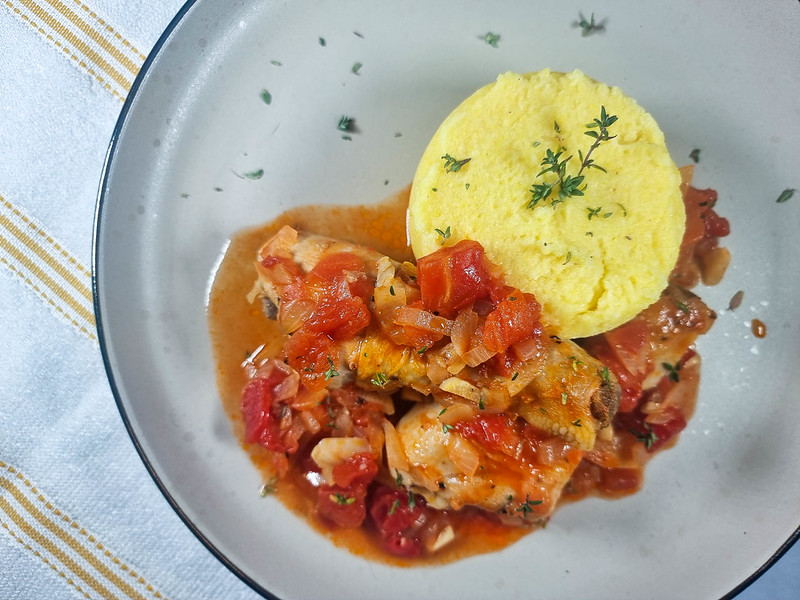
This Romanian chicken recipe reminds me of my other grandma, who would cook it almost every time we would visit her. We would gather around the table, whilst my grandpa would cook the polenta and my grandma would plate up the stew.
This chicken stew is a traditional recipe using a lot of garlic, and tomato sauce. This is a recipe coming from the south of the country, having a Turkish influence. It uses chicken legs which are soaked and then cooked in a tomato and garlic sauce. It’s a great recipe for summer, as it is quite light.
You can check out my recipe for chicken ostropel here.
Limbă cu Măsline – Tongue with Olives
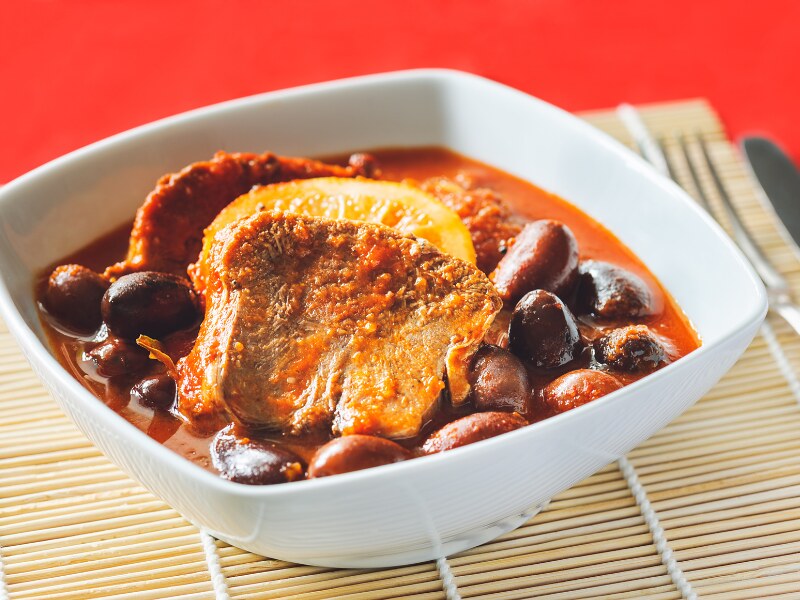
Not many people know what a lean piece of meat the tongue of the pork or the beef is. The tongue is a muscle, which makes it extremely tender and very flavoursome when cooked right.
The first time I came across the tongue with olives recipe was when my grandmother made it for herself. Back then I was a very picky eater, so she didn’t think that I would like it. However, once I tried it, I fell in love with the flavour and the texture of the meat.
This traditional recipe is light and has very refreshing flavours. The sauce uses tomato juice, white wine, black olives and lemon, which infuse the tongue which has been previously boiled and cut into small pieces. This has been one of my favourite traditional Romanian dishes and I continue to make it very often at home.
Ciulama de Pui – Chicken Ciulama
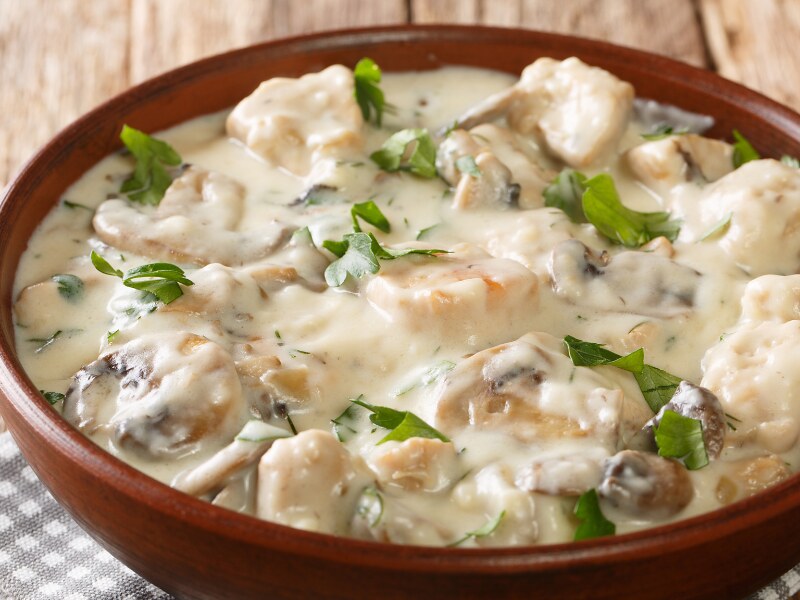
Another traditional Romanian recipe that was introduced to me by my grandma was the chicken ciulama. In this recipe, the chicken is cooked in a white veloute sauce, with mushrooms, garlic and sour cream.
The ciulama is a dish that you have to cook at home. I don’t recall seeing it on the menu of the traditional Romanian restaurants, not even to the most popular ones.
Cașcaval Pane – Fried Cheese
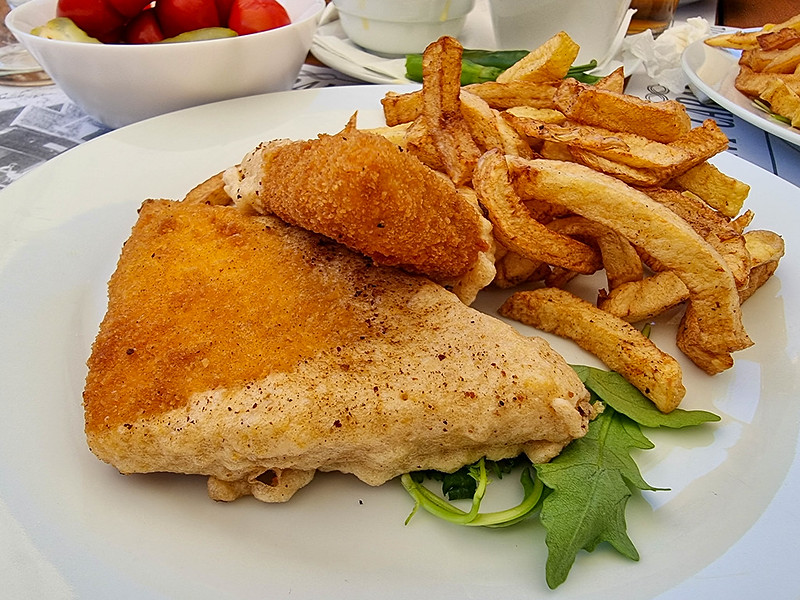
Cascaval pane is one of my favourite Romanian appetizers. I love the delicious flavour, texture and the way the cheese stretches when I cut into it.
Whilst there are many countries that fry cheese, in Romania it’s different. This is because the cheese used is “cascaval”, a hard, sweet type of cheese that has a high melting point. The cheese is first frozen, then passed through egg, flour and breadcrumbs, before being fried.
It is usually served with fries and pickles. Don’t let it cool down, as the stretching effect will disappear. If you prefer sweet with it, you could try some blackcurrant or Cranberry jam as a dip on the side.
Salată de Boeuf – Beef Salad
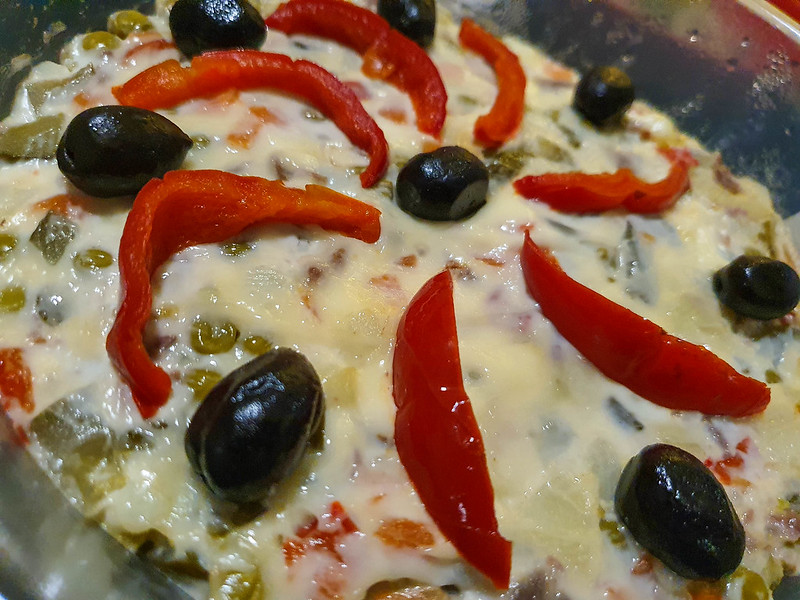
Beef salad is another staple in Romanian cuisine. Like sarmale, this dish is never missing from any important event or celebration in Romania. Even if it’s called beef salad, I like to make it with chicken – this is because I find boiled beef to be too tough, and gives the salad a strange texture.
As every other popular Romanian recipe, every family has their own variations to make this salad. The main ingredients are the protein, potatoes, carrots, pickles and mayo. I like to add cooked peas as well, as they add a slight sweet flavour to the salad. Some people like to add pickled peppers as well in the salad, but I don’t. I would only use slices of peppers to decorate the top of the salad.
When you make this salad at home make sure to either use your own pickles, or buy the ones that don’t have any sugar in their composition. A great pickle will be sour, not sweet.
You can click here to see my recipe for this traditional Boeuf Salad.
Salată de Vinete – Grilled Aubergine Salad
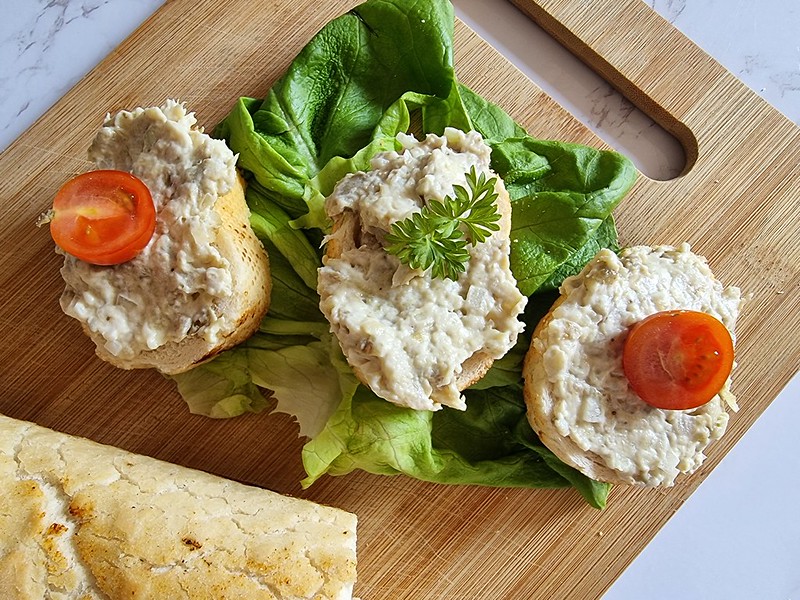
There was always aubergine salad in my house when I was growing up. It didn’t matter if I was at home or at my grandma’s house, I had this delicious salad at least once a week. This is another one of those Romanian foods that I always crave.
Every time I fire up the barbecue I take advantage of the flames and bake a few aubergines and then freeze the flesh, so I can always treat my cravings when I feel like eating this yummy aubergine salad.
The traditional Romanian aubergine salad is a simple recipe, full of flavour. The best is made with aubergines that have been grilled over an open fire, but, if you don’t have gas, you can always bake them in the oven. This salad is best served in generous amounts, on top of slices of bread.
You can click here to see my recipe for the grilled aubergine salad.
Zacuscă – Aubergine and Pepper Dip

Zacusca is the most famous Romanian dip. Whilst now you can buy it in jars, the best one is still homemade, every autumn, by moms and grandmas all over the country. Zacusca takes a long time to make, and this is why it’s always seen as a love product. Only cleaning the peppers and the aubergines takes half a day – and children in my family were always involved in this process.
Zacusca is a spread made from charred peppers and aubergines, chopped together and simmered in a giant pot for hours, mixing often so that the mixture doesn’t burn to the bottom. There are many versions of zacusca, some with extra vegetables, some made from beans, and others made with mushrooms. However, in my opinion, the traditional one is the best.
We eat zacusca spread on fresh bread, as a snack, as a sandwich, or as an appetizer.
For more traditional Romanian dishes, check out the articles below:
- The most delicious traditional Romanian classic cakes
- The most delicious Romanian soups
- The most delicious traditional Romanian desserts
Like it? Pin it!
